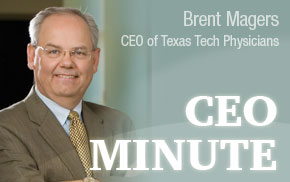 I often say the health care industry’s quality efforts are “first-generational.” By
that I mean we are off to a good start, but we have a ways to go. It seems to me that
too often we are focused on processes — not outcomes. It is natural that we would
do this — it is a way of beginning something difficult — like measuring quality in
health care with its hundreds of variables. But it is, well, first generational. By
the way, I am highly supportive of all quality improvements efforts — I am simply
saying improving quality in a meaningful way is a long journey.
I often say the health care industry’s quality efforts are “first-generational.” By
that I mean we are off to a good start, but we have a ways to go. It seems to me that
too often we are focused on processes — not outcomes. It is natural that we would
do this — it is a way of beginning something difficult — like measuring quality in
health care with its hundreds of variables. But it is, well, first generational. By
the way, I am highly supportive of all quality improvements efforts — I am simply
saying improving quality in a meaningful way is a long journey.To illustrate my point, when I was a hospital administrator, we were looking at core measures and actual patients’ medical records with a group of physicians, registered nurses and other professionals in a Quality Improvement meeting.
One of the measures was “aspirin upon arrival in the emergency department for chest-pain patients” and another, to “give a beta-blocker to this same cohort of patients upon arrival.” We were pleased that for this particular month we were 100 percent in both categories. We also looked at the so-called “door-to-balloon time,” the amount of time between when a patient arrives at the hospital and when they receive a percutaneous coronary intervention, like an angioplasty. An angioplasty is a procedure in which a catheter with a small balloon at the tip is inserted and inflated to open a blocked artery. By going quickly, we believed we could save heart muscle and lives. Then someone at the meeting asked , “Did the patient survive?” The room became quiet — in our excitement over meeting the first two metrics, we, for just a moment, appeared to forget about the patient and outcome of care.
So, when a study in the New England Journal of Medicine came out last week, it caught my eye. According to the study, heart attack deaths have remained the same, even as hospital teams have gotten faster at treating heart attack patients with emergency angioplasty. In an analysis led by the University of Michigan Frankel Cardiovascular Center, of 100,000 heart attack admissions across the United States between 2005 and 2009, the same time period that hospitals across the nation were working on this, 4.7 percent of patients died. The rate was virtually unchanged in spite of the rapid care — it was 4.8 percent in 2005 and 4.7 percent in 2009.
Should we be discouraged by this data? No, I would say not. We are learning. However, I would say an overemphasis on processes when the evidence says there is virtually no change in outcomes is a red flag. We must always look for improvements in outcomes and use science and measurement to get us there.
